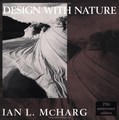Bowker Creek Blueprint brings new meaning in British Columbia to the Ian McHarg vision for “designing with nature”
Note to Reader:
In February 2010, the Bowker Creek Forum celebrated urban watershed management successes in the Georgia Basin. While the context was Georgia Basin, the spotlight shone most brightly on the process that culminated in the Bowker Creek Blueprint: A 100-Year Action Plan to Restore the Watershed.
The success of the Bowker Creek Forum led to an article on the Communities in Transition Information Resource blog. That article, in turn, was the trigger for compiling an historical retrospective on why ‘design with nature’ has become an integral and essential part of the green infrastructure and water sustainability branding in British Columbia.
The retrospective identified a number of British Columbians who have made timely and significant contributions in advancing a vision for developing land differently. The ‘design with nature’ story is told in their words.
To download a PDF version of the document, click on “Design with Nature” philosophy guides Water Sustainability Action Plan for British Columbia 
Creating Our Future: Desired outcome is to achieve “Settlement Change in Balance with Ecology” as communities develop and redevelop
 “This story has its genesis in the mid-1990s when the coming together of a group of change agents in a Union of BC Municipalities (UBCM) focus group set in motion a chain of events that has reverberated through time,” states Kim Stephens, Program Coordinator for the Water Sustainability Action Plan for British Columbia and author of the ‘design with nature’ retrospective.
“This story has its genesis in the mid-1990s when the coming together of a group of change agents in a Union of BC Municipalities (UBCM) focus group set in motion a chain of events that has reverberated through time,” states Kim Stephens, Program Coordinator for the Water Sustainability Action Plan for British Columbia and author of the ‘design with nature’ retrospective.
“The essence of the story is about the importance of moving beyond talk to on-the-ground actions. On Vancouver Island, the Bowker Creek Blueprint is bringing new meaning in the Capital Regional District to the Ian McHarg vision for designing with nature.”
Design with Nature
Ian McHarg was a renowned landscape architect and writer on regional planning using natural systems. His 1969 book Design with Nature pioneered the concept of ecological planning. His premise is simple: “that the shaping of land for human use ought to be based on an understanding of natural process.”
pioneered the concept of ecological planning. His premise is simple: “that the shaping of land for human use ought to be based on an understanding of natural process.”
His philosophy was rooted in an ecological sensibility that accepted the interwoven worlds of the human and the natural, and sought to more fully and intelligently design human environments in concert with the conditions of setting, climate and environment.
 Ian McHarg set his thinking in radical opposition to what he argued was the arrogant and destructive heritage of urban-industrial modernity, a style he described as “Dominate and Destroy.” In this book, he set forth basic concepts that were to develop later in Geographic Information Systems.
Ian McHarg set his thinking in radical opposition to what he argued was the arrogant and destructive heritage of urban-industrial modernity, a style he described as “Dominate and Destroy.” In this book, he set forth basic concepts that were to develop later in Geographic Information Systems.
The Bowker Creek Blueprint
“Watershed restoration is a long-term commitment. The Bowker Creek Blueprint is all about stakeholders committing to actions on the ground, one reach and one property at a time, over the next 100 years. Lessons learned can be transferred and adapted to other settings,” states Kim Stephens.
“The Blueprint is precedent-setting in vision and scope. It demonstrates that it is within our grasp to reverse past trends and, over time, to achieve settlement change in balance with ecology.”
“To put it simply, the Bowker Creek Blueprint gives the community a road map for achieving water sustainability in an urban watershed. It’s a practical model for other communities with similar aspirations. This is an impressive achievement.”
A 100-Year Action Plan
Bowker Creek is located in the urbanized heartland of the Capital Regional District. “The Blueprint is a 100-year action plan,” states Jody Watson, Chair of the Bowker  Creek Initiative.
Creek Initiative.
“The Blueprint is to be implemented over a period of decades because change can be slow in the urban environment. The 100-year timeframe has made it possible for everyone to commit to doing their part to make the restoration vision real.”
A New Form of Governance
 “The Bowker Creek Blueprint is an outstanding and inspiring accomplishment,” states Eric Bonham, a founding member of Convening for Action on Vancouver Island (CAVI) and a former Director in two provincial Ministries.
“The Bowker Creek Blueprint is an outstanding and inspiring accomplishment,” states Eric Bonham, a founding member of Convening for Action on Vancouver Island (CAVI) and a former Director in two provincial Ministries.
“The Bowker 100-Year Action Plan demonstrates how a ‘top down bottom up strategy’ leads to practical action. It has the power to positively influence what happens in other parts of the Georgia Basin.”
To Learn More
Major breakthroughs happen when decision makers in government work with grass-roots visionaries in the community to create desired outcomes. This is the essence of the Bowker Creek story.
To access a set of five downloadable documents, click on Bowker Creek Blueprint: Water Bucket stories profile precedent-setting initiative for urban watershed restoration in the Georgia Basin.
“These stories served as resource materials for Bowker Forum participants; and in future will serve as a publicly accessible record of the Bowker Blueprint process,” states Kim Stephens.
Posted March 2010



